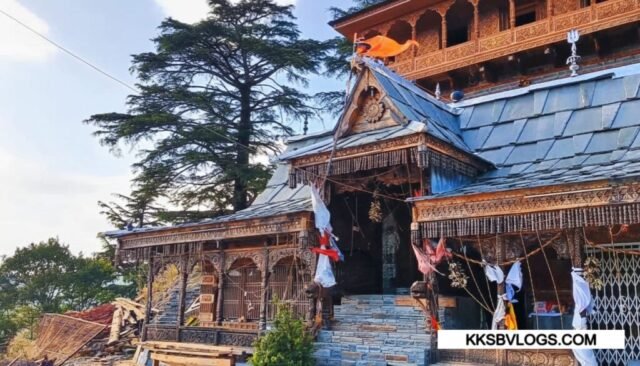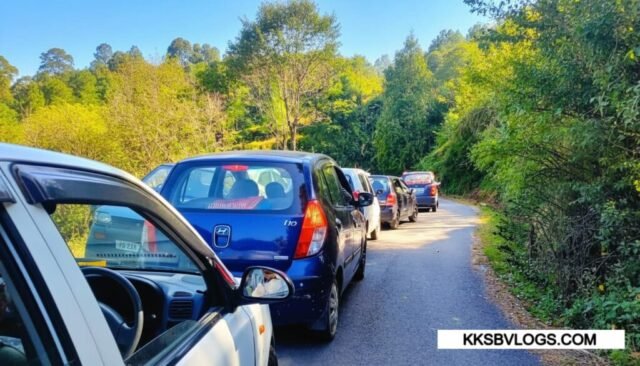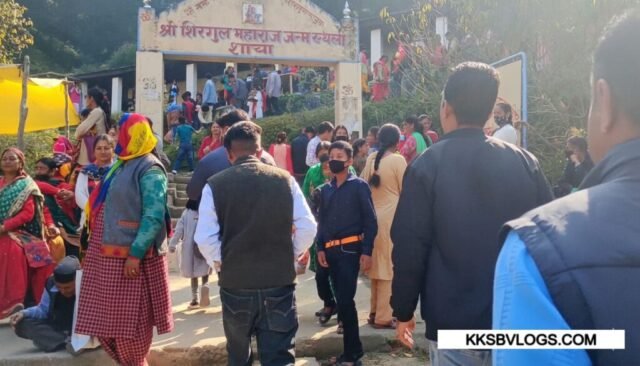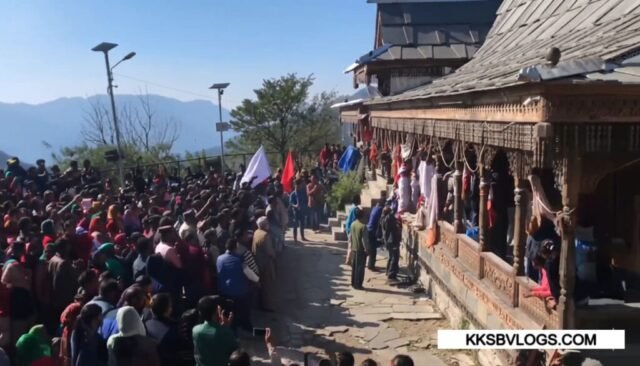1) Introduction – A Hidden Spiritual Gem near Rajgarh
Amid the Rajgarh hills of Sirmaur district, Himachal Pradesh, lies Shaya Temple—a spiritual site where ancient legends still breathe.
This temple is not just a religious spot; it is a living heritage believed to be the birthplace of Shirgul Devta and the sacred ground where Bhukdu Maharaj performed deep tapasya, filling the land with divine energy.
Perched at an altitude of around 1,900 m, Shaya Temple sits in the lap of nature, offering 360° mountain views, dense deodar–pine forests, and pin-drop silence.
In the morning, the chime of temple bells and the cool mountain breeze create a calm, spiritual aura that instantly soothes the mind.
Distances for Easy Planning
- Rajgarh → Shaya Temple: ~25 km / about 45 min
- Solan → Shaya Temple: ~54 km / about 3 hrs
- Nahan → Shaya Temple: ~100 km / about 4 hrs
- Chandigarh → Shaya Temple: ~120 km / 4–5 hrs
For pilgrims, history lovers, writers, and spiritual seekers, Shaya Temple offers a perfect blend of mystical legends, natural beauty, and peaceful Himachali culture. ✨
2) History & Legends – Shirgul Devta and Bhukdu Maharaj
The greatest charm of Shaya Temple lies in its ancient divine history and traditions.
Locals believe that Shirgul Devta—one of Himachal’s most revered kul-devtas (ancestral deities)—was born here.
It is also said that Bhukdu Maharaj, known for deep meditation and miraculous powers, sanctified this place through intense tapasya.
2.1 Shirgul Devta – The Guardian of Sirmaur Hills
Shirgul Devta is worshipped as the protector of Sirmaur and nearby hills.
Local legends narrate that:
- Shirgul Devta’s birthplace is Shaya itself, making this temple his spiritual origin point.
- Even as a child, he was believed to calm storms and protect cattle with divine powers.
- Later, he made Churdhar Peak his main seat of meditation, but Shaya remains his spiritual source.
Villagers lovingly call him Shirgul Maharaj and believe his soul still protects the region from natural disasters, crop failures, and evil spirits.
2.2 Bhukdu Maharaj – The Silent Sage
Bhukdu Maharaj’s presence is equally powerful in the temple’s history.
According to villagers:
- He was a great Himalayan sage who arrived centuries ago for deep meditation.
- He meditated for years inside a gufa-like sanctum, gaining extraordinary spiritual powers.
- His miracles—such as healing the sick and stopping forest fires with a single mantra—are still shared as living folklore.
This is why Shaya Temple is considered a double-divine site—the birthplace of Shirgul Devta and the meditation ground of Bhukdu Maharaj.
2.3 Local Beliefs & Annual Fairs
Every year, villagers celebrate special fairs in honor of Shirgul Devta and Bhukdu Maharaj.
- The palki yatra (deity procession) is accompanied by dhol-nagada music and traditional nati dance.
- Devotees who receive blessings often offer brass bells and sponsor bhandara (community feasts).
- Families from Rajgarh, Solan, and even remote parts of Uttarakhand come to perform kul-devta rituals.
For travelers, these fairs provide not only spiritual connection but also a deep cultural immersion, showing how faith and folklore shape Himachali life. 🏔️
3) Temple Architecture & Natural Setting
The appeal of Shaya Temple lies not just in its legends but also in its unique Himalayan architecture and breathtaking surroundings.
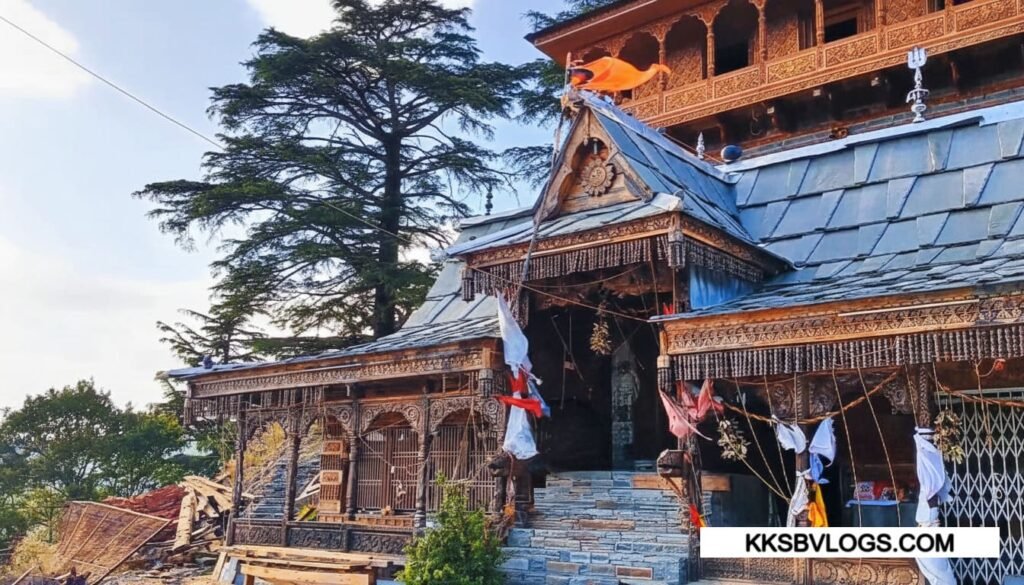
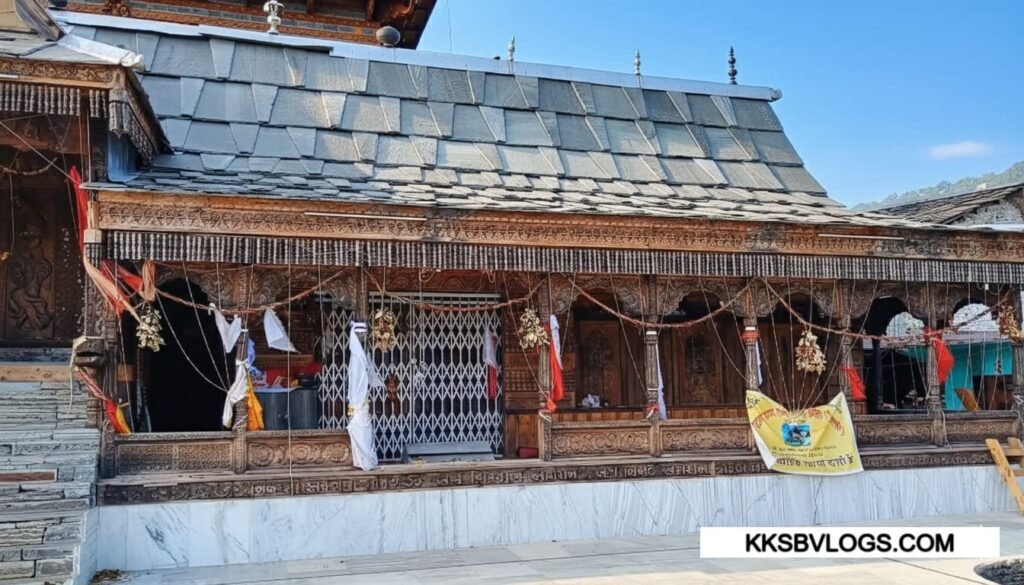
3.1 Himachali Wooden-Stone Design
The main sanctum is built in the traditional Kath–Kuni style:
- Deodar wood beams and interlocked stone walls keep interiors warm in winter and cool in summer.
- Slate roofs are perfect for shedding rain and snow.
- Intricate hand-carved motifs—floral patterns, mythic symbols, and protective deities—adorn the pillars and doorways.
As you enter, a row of brass bells greets you with soft musical chimes. 🔔
Inside, you find Shirgul Devta’s idol and Bhukdu Maharaj’s meditation spot, often marked by a sacred stone or gufa-like space, radiating mystic energy.
3.2 Courtyard & Ritual Flow
A wide open courtyard hosts parikrama (circumambulation) and collective prayers.
During morning aarti, the entire complex resonates with incense fragrance and the sound of shankh and bells.
On festival days, the courtyard blooms with colorful flags, flowers, and traditional rangoli.
Small resting plinths and shaded verandahs welcome elders and travelers, while a natural spring nearby provides fresh drinking water, ensuring self-sufficiency.
3.3 Surrounded by Forest & Mountain Vistas
The temple is wrapped in dense deodar and pine forests, creating a natural soundproof wall.
From the courtyard edge, visitors can view:
- West: rolling Rajgarh and Sirmaur hills
- East: distant Garhwal Himalayan snow peaks
- Below: glimpses of the shimmering Tons river
During golden sunrises and crimson sunsets, the 360° Himalayan panorama becomes a photographer’s dream. 📸
After monsoon, when the sky is crystal clear, even the Milky Way is visible at night. 🌌
4) Festivals & Rituals – Living Faith in the Mountains
The yearly calendar of Shaya Temple is filled with devotion and celebration.
During every festival, the entire valley feels like one family, resonating with dhol-nagada beats, incense fragrance, and soulful bhakti songs.
4.1 Annual Shaya Mela
The biggest festival is the Shaya Mela, usually celebrated at the end of monsoon (July–August) or during the October harvest season (dates vary by local lunar calendar).
Highlights include:
- Palki yatra (deity procession) of Shirgul Devta and Bhukdu Maharaj
- Traditional nati dance performed by villagers
- Free bhandara (community feast) for all visitors
Devotees come from distant Sirmaur villages, the Rajgarh belt, and even parts of Uttarakhand to seek the blessings of their kul-devta.
During the mela, the entire temple complex is decorated with colorful flags, fresh flowers, and glowing lamps, transforming the site into a divine Himalayan carnival. 🏔️✨
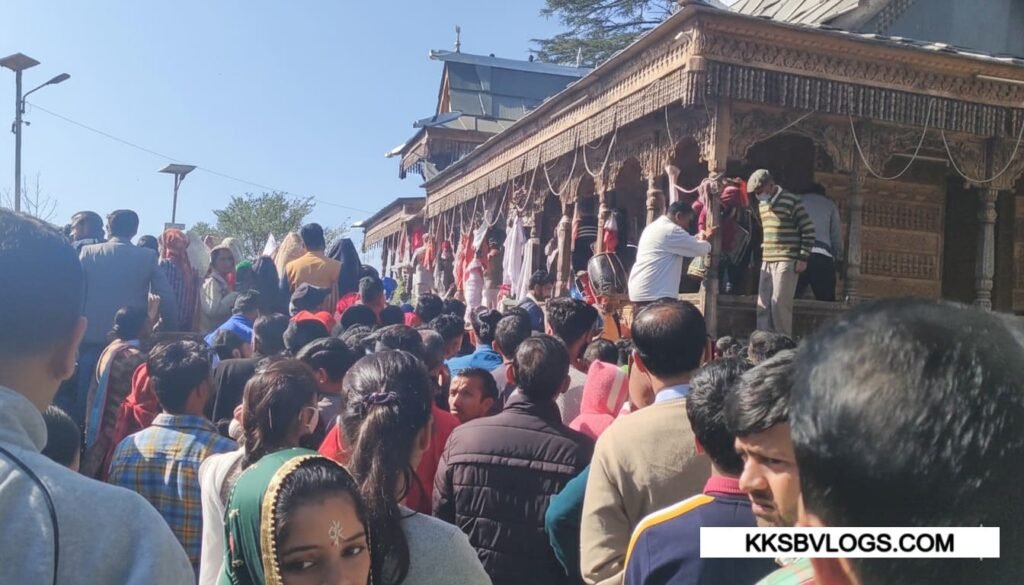
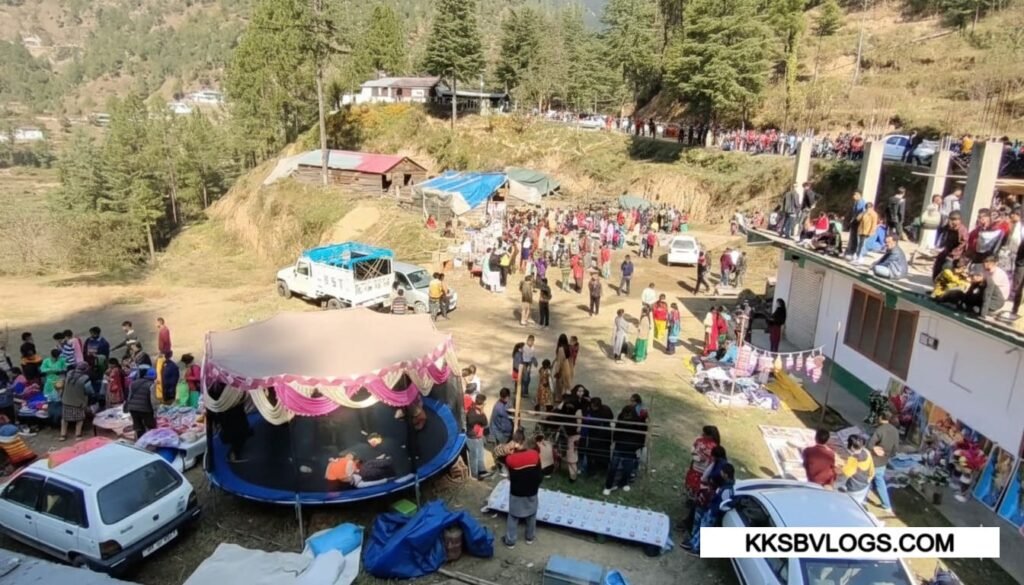
4.2 Special Monthly Days
Apart from the main mela, the temple observes special spiritual days:
- Purnima (Full Moon): Evening aarti with special bhajan-kirtan.
- Navratri: Fasting, kanya poojan, and devotional rituals.
- Magh Sankranti & Baisakhi: Local farmers offer their first harvest to the deities.
Each ritual brings community bonding — from cooking Siddu and rajma-chawal for guests to singing ancient ballads together. 🎶
5) Things to Do at Shaya Temple
Visiting Shaya Temple is not just about offering prayers—it is a multi-layered experience where spiritual silence, natural beauty, and Himachali hospitality merge beautifully.
5.1 Darshan & Meditation
- Early morning, the combination of incense aroma, soothing temple bells, and cool mountain air transforms the courtyard into a natural meditation hall.
- Many visitors sit quietly near Bhukdu Maharaj’s meditation spot (gufa-like sanctum) for silent prayer or deep breathing.
5.2 Forest & Hill Walks
The surrounding dense deodar–pine forests are perfect for short, refreshing walks.
- Hear bird calls and mountain streams
- Spot occasional Himalayan langurs
- Capture breathtaking sunrise or sunset ridge views, especially during clear autumn evenings when Garhwal Himalayan peaks glow pink-orange.
5.3 Join Local Village Life
Take a slow walk in nearby Shaya village to admire traditional Kath–Kuni houses, terraced fields, and apple orchards.
During harvest, families often invite travellers for apple plucking or Siddu cooking sessions, making your visit warm and personal.
5.4 Cultural Evenings
Even on non-festival days, locals often gather in the temple courtyard for folk dance and dhol-nagada music sessions.
Travellers are usually welcomed to join the nati dance, offering a joyful way to connect with Himachali culture.
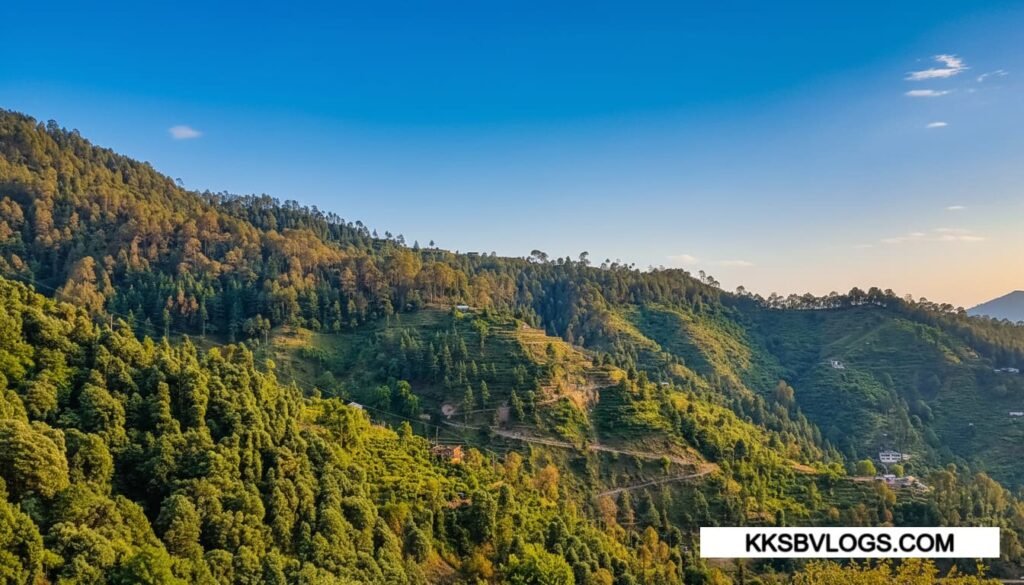
6) Best Time to Visit Shaya Temple
Shaya Temple is beautiful year-round, but every season offers a unique charm:
| Season | Temperature | Experience |
|---|---|---|
| Spring (Mar–May) | 15–22 °C | Forests bloom with wildflowers; perfect for peaceful darshan & photography |
| Summer (June) | 18–24 °C | Pleasant weather for family trips & long forest walks |
| Monsoon (Jul–Sep) | 15–20 °C | Greenest landscapes & vibrant Shaya Mela; carry raincoat & non-slip shoes |
| Autumn (Oct–Nov) | 10–18 °C | Clear blue skies, apple harvest & the best sunrise-sunset views |
| Early Winter (Dec–Jan) | 5–10 °C | Occasional light snowfall turns temple complex into a serene white world—perfect for spiritual seekers & photographers |
💡 Travel Tip:
- Morning visits (8–10 AM) are ideal for darshan and panoramic photography.
- If visiting around festival dates, book stay early to ensure comfortable accommodation.
7) How to Reach Shaya Temple
Although offbeat, Shaya Temple is easily accessible by road.
🚗 7.1 By Road (Most Convenient)
- Rajgarh → Shaya Temple: ~25 km / about 45 min
- Solan → Shaya Temple: ~54 km / about 3 hrs
- Nahan → Shaya Temple: ~100 km / about 4 hrs
- Chandigarh → Shaya Temple: ~120 km / 4–5 hrs
The drive is scenic, with pine forests and small tea stalls.
The last few kilometers are narrow but well-paved.
A private taxi or self-drive car is the easiest option.
🚉 7.2 By Train & Air
- Nearest Railheads: Solan (55 km)
- Nearest Airport: Chandigarh (~130 km)
From the station or airport, travellers can hire cabs or take buses to Rajgarh, then a local taxi to Shaya Temple.
🚌 7.3 By Bus
Regular Himachal Road Transport buses run up to Rajgarh.
From there, shared jeeps or hired taxis cover the final stretch to the temple.
8) Visitor Information – Before You Plan Your Trip
Shaya Temple is a natural open-heritage site, so entry is free.
Visitors can come year-round, but morning to late afternoon is the best time for darshan and photography.
8.1 Ideal Duration & Sample Itinerary
- One-Day Spiritual Visit:
- Morning: Drive from Rajgarh, temple darshan
- Afternoon: Forest walk and Siddu lunch
- Evening: Sunset view before returning
- Two-Day Relaxed Trip:
- Day 1: Arrival, temple darshan, evening folk dance
- Day 2: Forest hike, village walk, apple orchard visit (seasonal)
8.2 Facilities
- Stay: Orchard homestays and small guesthouses in Rajgarh; during festival times, some families in Shaya village also offer basic homestays.
- Food: Local families or small dhabas serve Siddu, rajma-chawal, sepu badi, ghee-rich halwa, and herbal teas from mountain herbs.
- Connectivity: BSNL network works best; other networks are patchy.
- Cash: Carry cash, as card payments are rarely accepted.
- Shops & Medical Aid: Available at Rajgarh market (~25 km).
8.3 Travel Tips
- Visit in the morning for clear views and less crowd.
- During monsoon, carry non-slip shoes and a raincoat.
- Respect local customs: remove shoes before entering the temple and seek permission before taking photos. 🙏
9) Our Experience
Our Shaya Temple Himachal Pradesh trip felt like a true spiritual retreat.
Here’s our 2-day slow-travel diary:
Day 1 – Arrival & Divine Darshan
Driving early from Rajgarh, we were greeted by pine-scented air and mist-filled valleys.
The first glimpse of the stone-and-wood temple complex amid deodar forests instantly calmed our hearts.
At the gate, the ringing brass bells created a deep spiritual vibration.
Inside, Shirgul Devta’s idol radiated a quiet but powerful presence, while Bhukdu Maharaj’s gufa-like meditation spot emanated a profound stillness.
The fragrance of deep-dhoop incense, shankh sounds, and pine breeze turned the visit into a meditative experience.
Afternoon Forest Walk & Village Life
After darshan, we strolled along a nearby deodar trail.
The soft pine-needle carpet, bird calls, and occasional langur sightings felt like nature’s own meditation.
In Shaya village, a kind family welcomed us, showing their apple orchard and serving fresh Siddu with herbal tea.
Evening Folk & Bonfire
By evening, the temple courtyard transformed into a mini festival.
Locals performed nati dance, and dhol-nagada music filled the air.
It felt as though we had stepped inside a living Himachali tradition, not just visited a tourist spot.
Day 2 – Sunrise & Spiritual Silence
The next morning, we reached the temple courtyard at 6 AM to witness a glorious sunrise.
Golden-orange light bathed the snow peaks of the Garhwal Himalayas.
Sitting quietly near Bhukdu Maharaj’s meditation cave, we experienced deep inner peace beyond words.
As we left, the echoing temple bells felt like a gentle blessing for our onward journey.
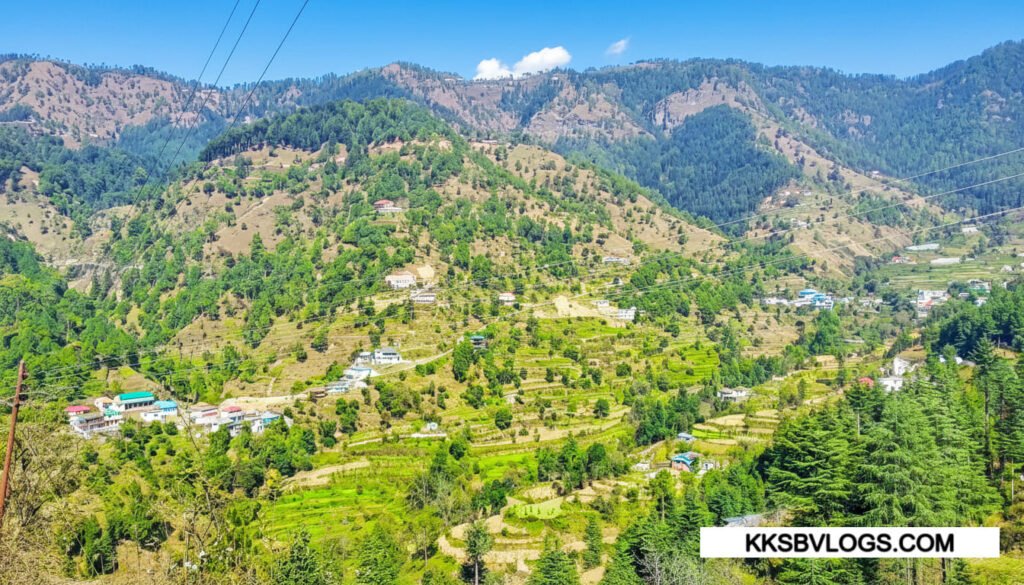
10) Nearby Attractions – Extend Your Shaya Trip
Several offbeat destinations around Shaya Temple allow you to plan a 2–3 day Sirmaur circuit combining nature, culture, and spirituality.
10.1 Rajgarh (~25 km)
Known as the Peach Bowl of Asia, Rajgarh is famous for fruit markets, orchard walks, and old Himachali houses.
Pick up fresh peaches, apples, or homemade jams after your spiritual visit.
10.2 Habban Valley (~15 km)
A paradise of dense deodar forests and apple orchard homestays, ideal for slow travel, forest hikes, and Siddu meals.
10.3 Haripurdhar & Bhangayani Mata Temple (~80 km)
High-altitude meadows with 360° Himalayan views and the sacred Bhangayani Mata Temple, a must for spiritual travellers.
10.4 Renuka Ji Lake (~85 km)
Himachal’s largest natural lake, perfect for boating, forest walks, and visiting the Renuka Mata Temple.
The November Renuka fair is a cultural highlight.
11. Shirgul Temple Location, Photos & Video
YouTube Video:Coming soon on – KKSB Vlogs
Instagram Updates: Stay connected with us for reels and updates– @official_kksb
Shirgul Temple Photos
Shirgul Temple Location
FAQs Of Shirgul Temple (Shaya) Himachal Pradesh
Where is Shaya Temple located?
Shaya Temple lies in Sirmaur district, Himachal Pradesh, about 15–20 km from Rajgarh and 120 km from Chandigarh.
Set at 1,900 m altitude, it is surrounded by deodar–pine forests and offers stunning 360° Himalayan views.
Why is Shaya Temple famous?
It is the birthplace of Shirgul Devta, the guardian deity of Sirmaur, and the meditation site of Bhukdu Maharaj, a legendary sage.
The temple blends spiritual legends, Himalayan architecture, and serene natural beauty.
What is the best time to visit Shaya Temple?
Visit between March–June for flowers and pleasant weather or October–November for clear skies and apple harvest.
During July–September, the valley turns emerald green and hosts the vibrant Shaya Mela.
Early winter offers peaceful mornings with occasional light snowfall.
How can I reach Shaya Temple?
Drive via Rajgarh—about 45 minutes from the town.
It’s around 70 km from Solan, 90 km from Nahan, and 120 km from Chandigarh.
Visitors can also reach by train (Solan/Kalka) or air (Chandigarh) and then hire a cab.
What are the main festivals celebrated here?
The highlight is the Shaya Mela, held after monsoon or during the harvest season.
It features palki yatra, dhol-nagada music, nati dance, and community feasts.
Full-moon aarti and Navratri rituals also draw many devotees.
What activities can visitors enjoy?
Besides darshan and meditation, enjoy forest walks, sunrise photography, and village life.
Seasonal activities include apple picking, Siddu cooking sessions, and joining folk dance evenings with locals.
Are stay and food options available near Shaya Temple?
Yes. Rajgarh town offers orchard homestays and small guesthouses, and during festivals some Shaya village families host visitors.
Enjoy Siddu, rajma-chawal, sepu badi, ghee-rich halwa, and herbal teas made from mountain herbs.
Is Shaya Temple safe for families or solo travellers?
Absolutely.
The temple’s peaceful setting, friendly locals, and easy trails make it ideal for families, kids, and solo spiritual seekers.
Just carry warm clothes and rain gear during monsoon.
Which nearby attractions can be visited with Shaya Temple?
Combine your trip with Rajgarh (fruit markets), Habban Valley (orchards & hikes), Haripurdhar & Bhangayani Mata Temple, Renuka Ji Lake, and Paonta Sahib Gurdwara for a 2–3 day Sirmaur circuit.
✅ Conclusion
The Shaya Temple in Sirmaur, Himachal Pradesh is a spiritual jewel hidden in the deodar forests—a place where legends of Shirgul Devta and Bhukdu Maharaj meet breathtaking Himalayan landscapes.
Whether you come for darshan, meditation, forest walks, or folk festivals, Shaya Temple promises peace, cultural richness, and a timeless connection to the divine. 🕉️🌲✨


